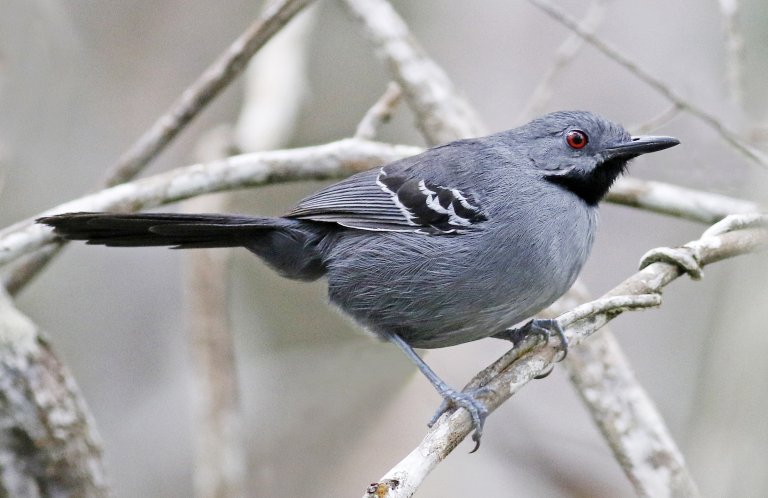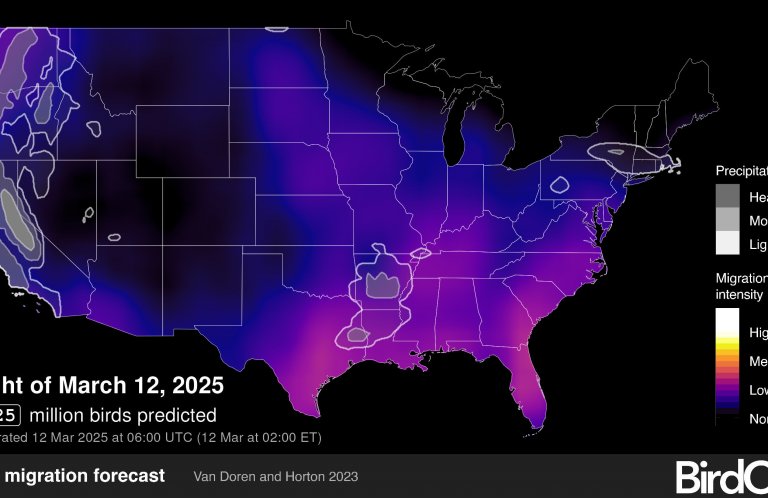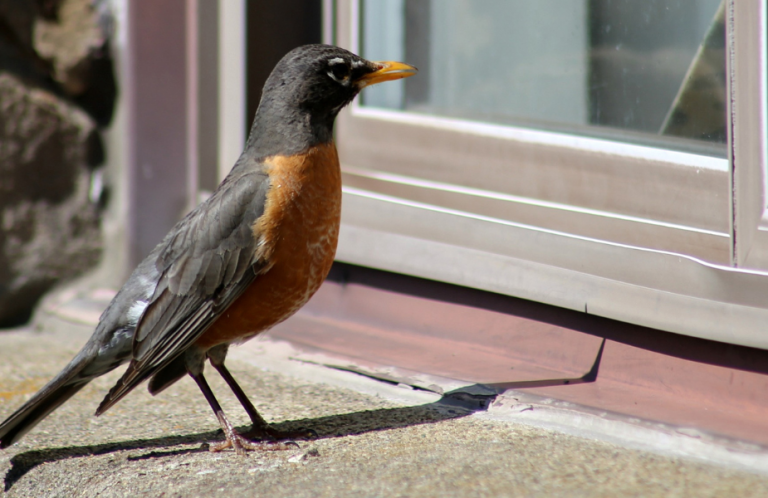Celebrating the Migratory Bird Treaty, a Pact That Transcends Borders
In February 1886, a young New York ornithologist named Frank Chapman set out on an unusual birding expedition. Chapman did not head for meadows or forests outside the city. He staked out the wilds of uptown Manhattan, counting the number of ladies' hats adorned with feathers and other bird parts. Plumage was all the rage among fashionistas of the day, and wild birds of the Americas and elsewhere were paying the price.
His survey indicated how high that price was. "Chapman counted 542 hats adorned with 174 whole birds or their disembodied parts," Adee Braun wrote in a 2013 Lapham's Quarterly story. "The more flamboyant ladies flaunted not just feathers but also the eyes, wings, and in some cases, entire bodies of birds carefully arranged with other natural accessories like leaves and moss." All in all, Chapman counted 40 different bird species that had made the ultimate sacrifice for fashion.
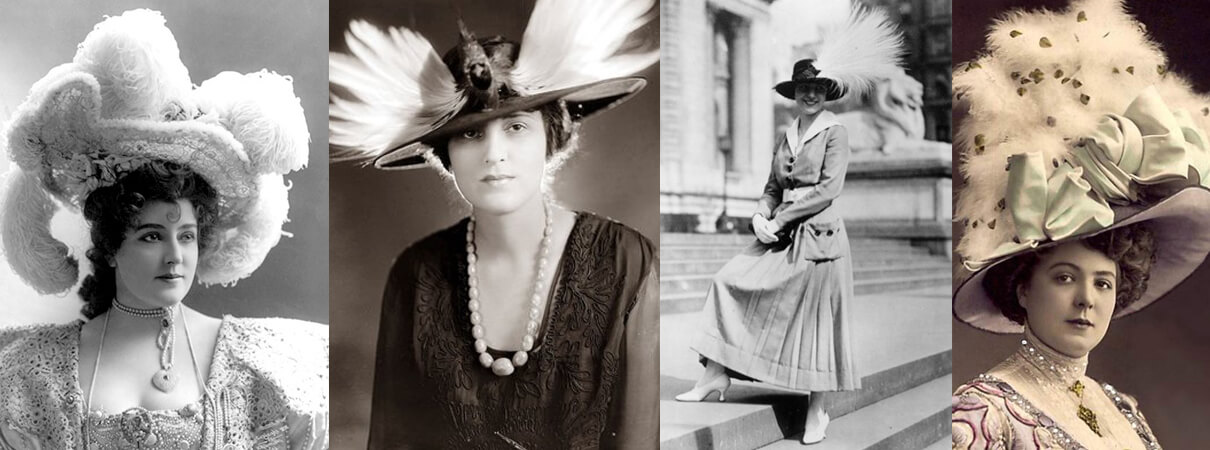
Feathered hats were all the rage among fashionistas in the late 19th and early 20th centuries, but birds paid a heavy price.
Today it's more fashionable to watch birds than to wear them. But in the late 19th and early 20th century, the hunger for decorative plumage brought some species, including the Snowy Egret, to the brink of extinction. At the same time, the Passenger Pigeon famously met its fate, a victim of unregulated hunting.
Terrible as it was, the indiscriminate slaughter of birds led to one of the United States' earliest and most important environmental laws. The Migratory Bird Treaty Act of 1918, which turned a landmark 1916 treaty with Canada into federal law, has since proven to be a lifesaver for more than a thousand species of birds.
A century after the treaty was signed, the law continues to inform American Bird Conservancy's work to protect birds throughout the Americas. But, like the birds it was designed to safeguard, the Migratory Bird Treaty Act still needs our protection.
Signing of the Migratory Bird Treaty
We have two Boston socialites, Harriet Hemenway and Minna Hall, to thank for the activism that eventually led to the Migratory Bird Treaty and halted the avian massacre. Once the two women learned about the impacts of unrestricted hunting, they organized a boycott among the chic set. Conservation groups, including early Audubon chapters, began to spring up.
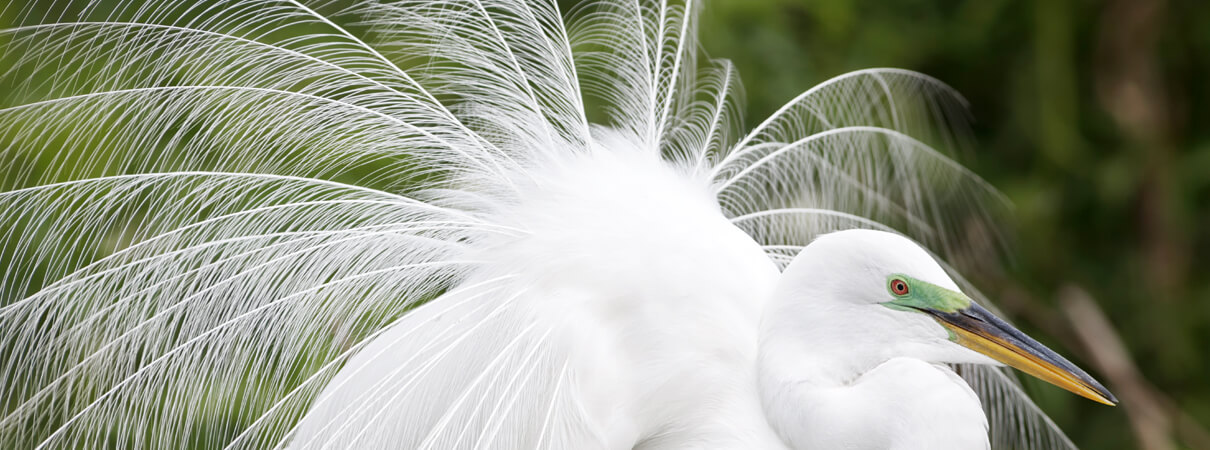
The Great Egret was one of many bird species hunted extensively for its plumes, which were used for ladies' hats. Photo by David Osborn/Shutterstock
Hemenway and Hall's parlor movement became a political one, and Congress eventually took notice. In 1900, it passed the Lacey Act, the nation's first law to protect wildlife, which banned the illegal trade of wild animals, including birds. When the Lacey Act failed to shut down the interstate feather trade, Congress adopted the Weeks-McLean Migratory Bird Act of 1913. Ambitiously, the law sought to protect “all wild geese, wild swans, brant, wild ducks, snipe, plover, woodcock, rail, wild pigeons, and all other migratory game and insectivorous birds” from unregulated hunting.
The Weeks-McLean Act didn't survive challenges in court. But in August 1916, the United States and Canada entered into a treaty that spelled out uniform protections for many migratory birds, “in order to assure the preservation of species either harmless or beneficial to man.” Two years later, in 1918, the Migratory Bird Treaty Act (MBTA) turned the treaty into law. The United States later struck similar agreements with Mexico, Japan, and Russia.
Protections for Birds—In the Nick of Time
The act provides sweeping protections for many species, making it illegal “by any means or in any manner” to “pursue, hunt, take, capture, kill, attempt to take, capture or kill, possess, offer for sale, sell, offer to purchase, purchase,” ship, or receive birds or bird parts, nests, or eggs from listed species without a federal permit.
(The list of protected birds is adjusted periodically and does not cover non-native species and resident game birds, such as wild turkeys or quail.)
With international protections in place, once-imperiled species began to rebound on both sides of the border. Snowy Egrets made a remarkable comeback once the feather trade came to a halt, even extending their historic range—though the species still faces threats from habitat loss and other factors today. And Trumpeter Swans, which had dwindled to a population of about 70 birds in the mid-1930s, recovered enough to be taken off Canada's endangered list in 1996.

Protection under the Migratory Bird Treaty Act led to the Trumpeter Swan being removed from Canada's endangered species list 20 years ago. Photo by Dan Behm
“The Migratory Bird Treaty Act stopped the wholesale slaughter of migratory birds for ornamental feathers and the unregulated hunting of waterfowl,” says Steve Holmer, Senior Policy Advisor for ABC. “As a result, populations of most affected bird species have recovered, and waterfowl hunting in the U.S. is now sustainable and benefits conservation.”
A Shared Responsibility
As bird populations began to rebound thanks to the law, bird conservation also began to flourish, taking on a cross-border importance it had earlier lacked.
The MBTA “really was the start of all the collaborative, cooperative work we do to conserve migratory birds,” says Emily Jo Williams, ABC's Vice President for North American Birds and Habitats. “The recognition that birds are international resources or treasures established the basis for all of us to work together across international boundaries. It set the stage for that shared responsibility."

Swainson's Hawk is a priority species for American Bird Conservancy and is protected under the Migratory Bird Treaty Act. Photo by Sarah Jessup/Shutterstock
Even though the MBTA has supported remarkable success for birds and bird conservationists, Holmer cautions that we can't rest easy. “We need the act now more than ever to address the dozens of threats facing migratory birds,” he says. “Forty percent of all migratory bird species are in decline, so it is urgent that we put in place practices we already know will save birds from needless deaths.” This includes capping open pipes that trap birds and other wildlife, for instance, and making sure that wind-energy development avoids sensitive bird areas like migration corridors.
Keeping the Law Strong
If Harriet Hemenway and Minna Hall were alive today, they would join the ranks of bird lovers working to make sure the Migratory Bird Treaty Act remains strong enough to protect birds for the next 100 years. That means keeping pressure on the U.S. Congress not to weaken the act through riders that make it harder to enforce.
Last year, for instance, the House of Representatives passed an appropriations amendment that would have kept the Department of Justice from enforcing the law. That amendment ultimately failed, but the threat remains. Keeping the act strong also means not allowing those who oppose it to make it difficult for federal agencies to limit the incidental “take,” or killing, of protected species like Bald Eagle.
Although many of North America's migratory bird species owe their very existence to the Migratory Bird Treaty Act, relatively few people know about it—and that's a serious threat in its own right, says Darin Schroeder, ABC's Vice President of Government Relations.
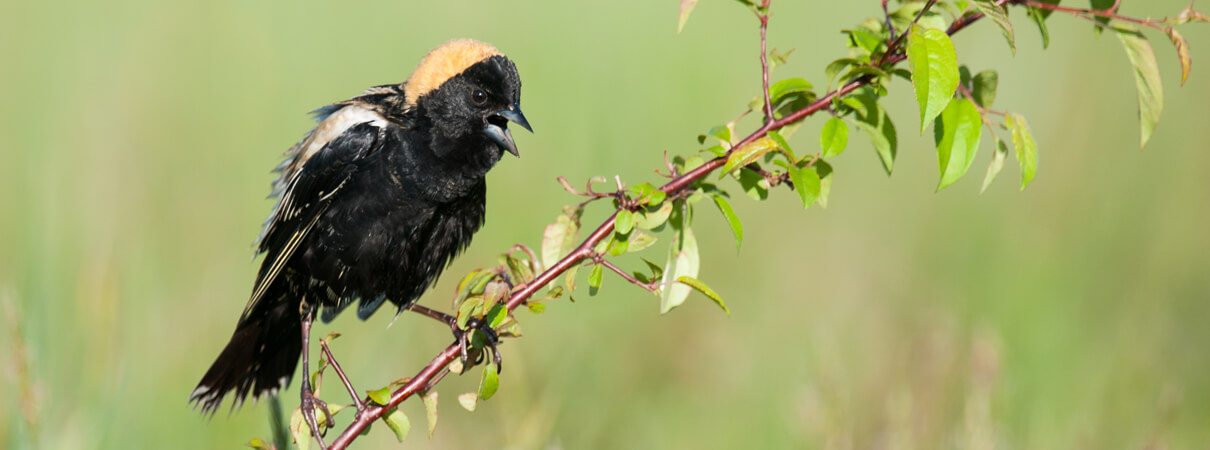
The Bobolink travels 12,500 miles to and from South America each year. This bird is another ABC priority species that is also protected under the Migratory Bird Treaty Act. Photo by Paul Sparks/Shutterstock
“People interested in birds need to know that their government once cared enough about them— the value they bring to our lives and the ecological services they perform—to protect them with a federal law,” Schroeder says.
Migratory birds face enough natural challenges as they make their remarkable spring and fall journeys. It's up to us to guard the birds and the law that protects them from human-caused threats. As we mark the centennial of the 1916 treaty and the law that soon followed, together we can make sure they protect our native birds for many decades to come.
Take action! Please urge your lawmakers to protect migratory birds and the Migratory Bird Treaty Act.






































